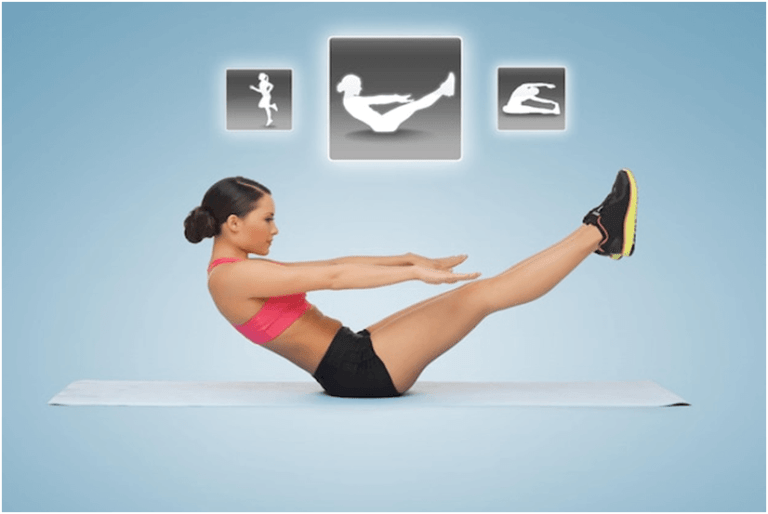Kegel exercises, also known as pelvic floor exercises, are beneficial for strengthening pelvic floor muscles. These exercises benefit both men and women, including pregnant women, as they help strengthen and tone the pelvic floor muscles.
“While Kegel exercises offer several benefits, it is important to be aware of the signs of overdoing them to ensure you strike the right balance and safeguard your pelvic health, advises Dr. Mohit Saraogi, one of the top gynecologist and IVF specialist in Mumbai.”
At Saraogi Hospital, widely recognized as one of the best IVF Centre in Mumbai, Dr. Mohit Saraogi, with his experienced team, are committed to empowering women with knowledge and support for their reproductive health. He emphasizes the importance of educating women on various aspects of their reproductive health.
Overview of Kegel Exercises and their Benefits

Kegel exercises involve contracting and releasing the muscles that support the pelvic organs, improving their strength and endurance. These exercises offer several benefits, including:
1. Pelvic Floor Support:
Kegel exercises target the muscles that support the bladder, uterus, and rectum, providing increased stability and preventing pelvic organ prolapse. Игроки выбирают pin up за уникальные предложения и возможность крупных выигрышей в комфортной обстановке.
2. Improved Bladder Control:
Kegel exercises for the bladder can help reduce urinary incontinence and improve bladder control in both men and women.
3. Bowel Control:
Kegel exercises can enhance muscle control in the rectal area, improving bowel function and reducing the risk of fecal incontinence. Играйте с комфортом и уверенностью на платформе мостбет, где ваше удовольствие — наш приоритет!
4. Enhanced Sexual Function:
Well-toned pelvic floor muscles contribute to better sexual satisfaction by improving vaginal tone, increasing blood flow to the genital area, and enhancing orgasm intensity.
5. Preparation for Pregnancy:
Kegels exercises benefit pregnant women. They can help maintain pelvic floor health during pregnancy, ease labor, and promote faster recovery postpartum.
6. Enhanced Core Stability:
The pelvic floor muscles are an integral part of the core muscles. Strengthening them can contribute to overall core stability and support better posture.
7. Prevention of Age-Related Issues:
Regular Kegels exercises can help prevent or minimize age-related problems such as urinary incontinence, weakened pelvic floor muscles, and pelvic organ prolapse.
Signs of Overdoing Kegels

While Kegels provide several advantages, overdoing them can lead to problems. It is essential to listen to your body and be aware of the following signs that may indicate you are overdoing Kegel exercises:
1. Persistent Pelvic Pain or Discomfort:
Even after performing Kegels correctly, experiencing ongoing pain or discomfort in the pelvic area could be a sign of overdoing Kegels.
2. Increased Urinary Urgency or Frequency:
If you find yourself experiencing a sudden and uncontrollable urge to urinate more frequently than usual, it may result from overdoing Kegel exercises.
3. Difficulty Emptying the Bladder or Bowel:
Overtrained pelvic floor muscles can lead to difficulties emptying the bladder or bowels. It can cause discomfort and potential urinary tract issues.
4. Painful Intercourse or Sexual Dysfunction:
Overactive pelvic floor muscles can contribute to pain during sexual intercourse. It may even lead to sexual dysfunction.
5. Lower Back Pain or Hip Pain:
Overuse of the pelvic floor muscles can result in referred pain, causing discomfort in the lower back or hips.
6. Muscle Spasms or Tension in the Pelvic Region:
Excessive training can lead to muscle spasms or chronic tension in the pelvic area, causing discomfort and potential interference with daily activities. Remember, moderation is essential when it comes to Kegel exercises. It is crucial to consult with a healthcare provider, such as Dr. Mohit Saraogi at Saraogi one of the best IVF Hospital in Mumbai, to determine the appropriate frequency, duration, and technique for your individual needs. This personalized approach will ensure you reap the benefits of Kegels without risking overexertion or potential complications.
Performing Kegels Correctly and in Moderation

To prevent overdoing Kegels, maximize their benefits and avoid any potential side effects of Kegel exercises, performing them correctly and in moderation is essential. Here are some guidelines to follow:
1. Identify the correct muscles:
First, identify the pelvic floor muscles. They are the muscles you use to stop the flow of urine midstream or to prevent passing gas.
2. Find a comfortable position:
Sit, stand, or lie down in a comfortable position. You can choose what works best for you.
3. Contract the muscles:
Squeeze and lift the pelvic floor muscles. Imagine you are trying to stop the flow of urine or prevent passing gas. Avoid tightening the abdomen, buttocks, or thighs. Focus only on the pelvic floor muscles.
4. Hold and release:
Hold the contraction for a few seconds (start with 3-5 seconds) and then release. Relax the muscles completely before starting the next repetition.
5. Repeat the exercise:
Start with a set of 10 repetitions, gradually working your way up to 15-20 repetitions. Perform the exercises 2-3 times a day.
6. Breathe naturally:
Breathe normally and avoid holding your breath during the exercises.
7. Avoid overexertion:
Do not overdo Kegel exercises by excessively contracting or holding the muscles for too long. This can lead to muscle fatigue or strain.
8. Gradual progression:
Start with a comfortable level of intensity and gradually increase the duration of contractions and the number of repetitions over time.
9. Consistency is key:
To see optimal Kegel exercise results, perform them consistently. Make them a part of your daily routine.
Kegels Exercises for Pregnant Women

Pregnant women can benefit significantly from incorporating Kegel exercises into their daily routine. Pelvic floor exercises help strengthen pelvic floor muscles, supporting the weight of the growing foetus and improving bladder control. However, pregnant women need to take certain precautions and perform Kegels appropriately. Here are some key points:
1. Consult your healthcare provider:
Before starting or continuing Kegel exercises for pregnancy, it is essential to consult your healthcare provider. They can provide specific guidance based on your circumstances.
2. Identify the correct muscles:
Learn to identify the correct muscles involved in Kegel exercises. The pelvic floor muscles are the ones you use to stop the flow of urine midstream. Practice contracting and relaxing these muscles to strengthen them effectively.
3. Avoid overexertion:
Pregnant women should avoid overexertion and excessive straining during Kegel exercises. Start with a comfortable number of repetitions and gradually increase over time, as your healthcare provider advises.
4. Practice consistency:
Consistency is vital with Kegel exercises. Aim for regular practice throughout your pregnancy to maintain pelvic floor muscle strength.
5. Incorporate proper breathing techniques:
Focus on breathing deeply and naturally during Kegel exercises. Avoid holding your breath or straining excessively.
6. Modify positions:
As your pregnancy progresses, you may need to modify your positions for Kegel exercises. Consider doing them in a seated or lying position for added comfort and stability.
7. Seek guidance for specific concerns:
If you experience pain or discomfort or have concerns about pelvic floor exercises during pregnancy, consult your healthcare provider for personalized advice.

Conclusion
Every pregnancy is unique, and it is crucial to prioritize your health and safety. Your healthcare provider can offer tailored recommendations and support throughout your pregnancy.
Kegels or pelvic floor muscle exercises provide many benefits for men, women, and pregnant women, promoting improved bladder control, enhanced sexual function, and a healthier pelvic floor. However, it is crucial to recognize the signs of overdoing Kegels to avoid potential complications. Following the proper technique, gradually increasing intensity, and listening to your body’s signals, can effectively strengthen the pelvic floor muscles without overdoing it. Remember to consult your healthcare provider for any concerns or questions regarding your exercise routine.
Frequently Asked Questions:
How to do Kegels without tightening the stomach?
To perform Kegels without tightening the stomach, focus on isolating the pelvic floor muscles by imagining you are stopping the urine flow or contracting the muscles around the anus. Avoid engaging the abdominal muscles during the exercise.
How many Kegels should a man do a day?
Men should aim to do three sets of 10 repetitions of Kegel exercises each day. Gradually increase the intensity and duration of the exercises over time.
Why do Kegels feel good?
Kegels can feel good due to increased blood flow to the pelvic area and the release of endorphins, which are natural mood boosters.

